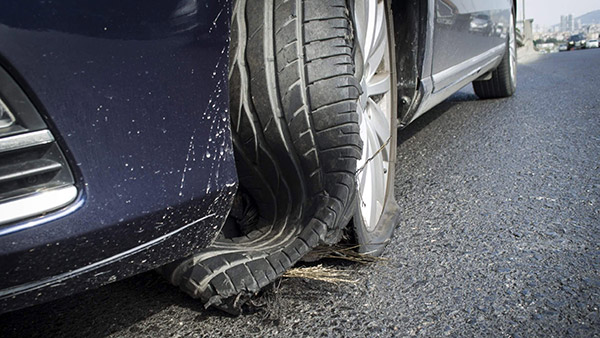How To Prevent Tyre Burst On Expressway? If you are asking yourself these question, teamautoexpert will guide you how to prevent tyre burst on highway, One of the most common causes of a Tyre burst On Expressway is overloading the vehicle beyond its recommended weight limit. This puts excessive pressure on the tyres, making them more susceptible to failure. Another key factor that can lead to a tyre burst is under-inflated or over-inflated tyres. So in this article we have covered Tips of How To Prevent Tyre Burst On Expressway?

Tyre burst occurrences are on the rise across the country as summer approaches. There have been a lot of new motorways built in India recently. Many of us are unaware of the significance of properly maintaining our tyres. On these high-speed motorways, there is a great chance of a tyre blowout, especially in the blistering summer heat. It can be a hazardous event, perhaps resulting in vehicle loss of control. It is critical to take proactive measures to guarantee your safety and the safety of others. Let’s go through some crucial techniques for avoiding tyre rupture while driving on motorways.
We give you some tips on preventing tyre burst out on the highways
Correct Tyre Pressure
Incorrect tyre pressure is one of the leading causes of tyre blowouts. Check the tyre pressure on a regular basis with a tyre pressure gauge.or get it checked at a fuel pump and ensure it matches the manufacturer’s recommended level. Properly inflated tyres not only improve fuel efficiency but also enhance grip and stability, reducing the risk of blowouts.
Inspect Tyres For Damage
Before driving off to your destination, thoroughly inspect your tyres for any signs of damage, such as cuts, bulges or excessive wear. Such issues weaken the tyre’s structure, making it more prone to blowouts. If you notice any abnormalities, it’s crucial to replace the tyre immediately.
Rotate & Balance Tyres
Uneven tyre wear can lead to instability and increase the likelihood of tyre burst. Regularly rotate and balance your tyres to ensure even wear across all four wheels. Consult your vehicle’s manual for the recommended rotation pattern and interval or seek assistance from a professional mechanic.
Avoid Overloading
Overloading your vehicle puts excessive stress on the tyres, increasing the risk of a blowout. Check your vehicle’s maximum load capacity and never exceed it. Distribute the load evenly and avoid placing excessive weight on a single tyre or axle.
Moderate Driving Speed
Driving at high speeds generates more heat in the tyres, which can potentially cause a blowout. Observe the speed limits and maintain a moderate pace while driving on expressways. This precautionary measure helps reduce heat build-up in the tyres, thereby minimising the risk of tyre bursts. Filling your tyres with nitrogen keeps the temperature relatively low. If it is available in your vicinity or on the route, prefer using nitrogen for your tyres.
Steer Clear Of Road Hazards
Expressways often have debris, potholes or other road hazards that can damage your tyres. Stay vigilant and maintain a safe distance from other vehicles, specially those that may be carrying loose cargo. Avoid driving over potholes or objects in the roadway whenever possible.
Regular Maintenance
Routine maintenance plays a crucial role in preventing tyre bursts. Ensure that your vehicle undergoes regular inspections and servicing, including alignment checks, suspension assessments and tyre tread evaluations. A well-maintained vehicle is less likely to encounter tyre-related issues.
FAQ
1. What leads to bursting of tyre on expressway?
Overloading the vehicle over its permissible weight limit is one of the most prevalent reasons of a tyre break. This puts too much pressure on the tyres, making them more prone to failure. Under-inflated or over-inflated tyres are another reason that might cause a tyre burst.
2. Can a tubeless TYRE burst?
In the case of a tubeless tyre, the tube used to repair the broken side wall might potentially shatter or rupture at high speeds. Both of these practises are harmful and should be avoided.
3. Which tyre is safe tube or tubeless?
Tubeless design
After assessing all of the pros and downsides, the tubeless tyre is clearly the ideal tyre pattern! It requires less maintenance and is less prone to punctures, with no inconvenience even if a puncture occurs because the car does not come to a complete stop. It also provides better fuel savings.
Nice information..